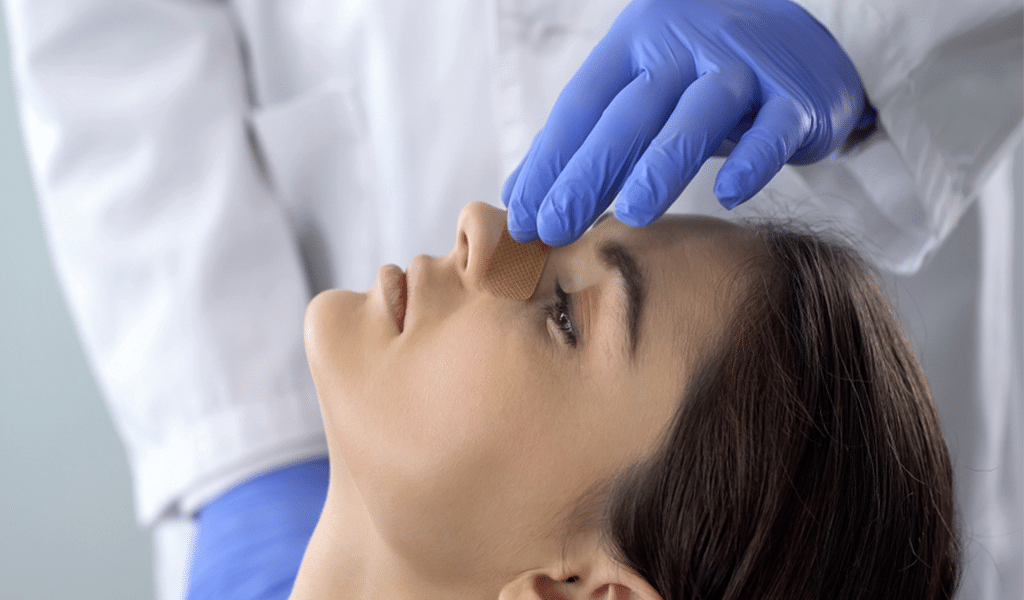- Rhinoplasty
- Sinusitis Treatment
- Revision Rhinoplasty
- Bone Curvature (Septum Deviation)
- Septum Perforation Treatment
- Nasal Flesh (Concha Hypertrophy)
- Nasal Congestion
- Hearing Loss
- Cochlear Implant
- Hearing Loss in Children
- Tympanoplasty
- Vertigo
- Tinnitus
- Middle Ear Microsurgery
- Otosclerosis
- Ear Tube
- Larynx Cancer
- Trachea Diseases, Stenosis
- Oral Cancer
- Cancer of the Pharynx
- Salivary Gland Diseases, Tumours
- Thyroid Surgery
- Neck Masses

Contents
ToggleNasal Flesh Growth and Treatment
Obstructions caused by the growth of the lower nasal meatus (concha) usually cause more discomfort at night and different methods are used to treat this problem.
In the treatment of lower nasal flesh, it is aimed to reduce these tissues as much as necessary. However, it is not recommended to completely remove the lower nasal flesh during this procedure. As a result of these methods frequently applied in the past, problems such as impaired nasal functions, respiratory problems, drying, crusting, recurrent infections and burning sensation may occur. For this reason, it is important to avoid excessive reduction of the lower nasal meatus and to perform the procedures without damaging the functional outer surface mucosa of the nasal meatus.
Many patients have a curvature of the septum (curvature of the nasal septum), which often causes the flesh in the opposite nasal passage (turbinates) to grow. Therefore, during deviated septum surgery, in order to achieve satisfactory results in terms of breathing, the flesh in the nasal passage, especially on the opposite side of the curvature, must be reduced appropriately. Otherwise, as a result of septum correction, the previously wider side will narrow and congestion will occur.
Radiofrequency application is among the most common methods to reduce the lower nasal flesh. This procedure aims to reduce the volume of the tissue under the mucosa of the lower nasal meatus located on the side walls of the nasal cavity. As a result of this process, thermal damage occurs in the tissues and these tissues harden. In about 4-6 weeks, this hard tissue helps the flesh to shrink.
This procedure can usually be performed under local anaesthesia and allows patients to quickly return to their daily activities after the procedure. The radiofrequency procedure is a common option for the treatment of obstructions caused by enlargement of the lower nasal meatus and has a high success rate.
Some patients may have other health problems that can cause enlargement of the lower nasal meatus, such as allergic rhinitis or vasomotor rhinitis. Therefore, the possibility of recurrence of these problems after the radiofrequency procedure should be considered.
In addition, a surgical procedure called endoscopic turbinate reduction can also be used. This involves partial removal of the lower nasal meatus or reduction of the turbinate bone. This procedure is preferred in cases where the size of the turbinates, the importance of the bone, the radiofrequency procedure is inadequate or the turbinates are excessively large or deformed.
Endoscopic reduction surgery is usually performed under general anaesthesia and is performed using microdebrider technology. Since the integrity of the mucosa is not disturbed during the procedure, the risk of bleeding is reduced and there is no need to apply tampons.
Both methods can be effective, but which method is used depends on the patient's needs and state of health. After treatment, patients can usually breathe with relief and their quality of life is significantly improved.
